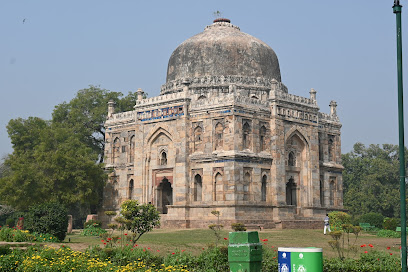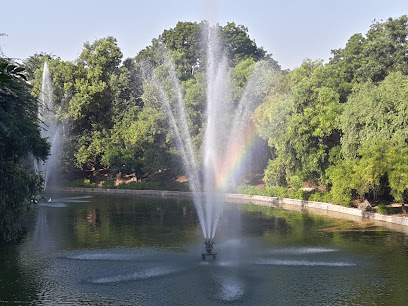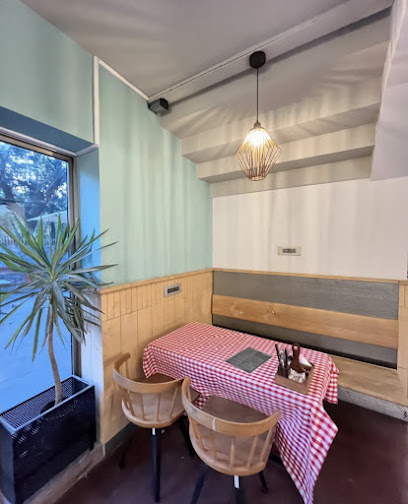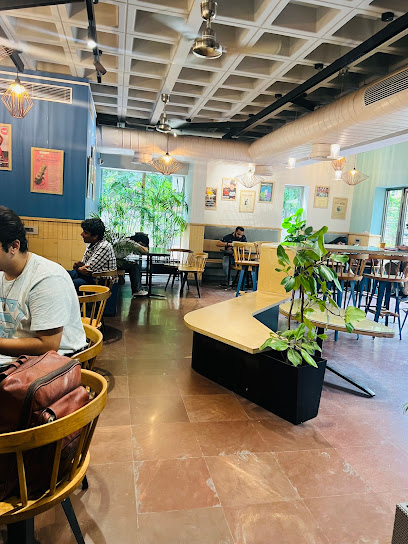
Lodhi Gardens: A Green Oasis in the Heart of Delhi
Explore Lodhi Gardens, a serene escape in Delhi with rich history, lush greenery, and stunning Indo-Islamic architecture. Perfect for nature lovers and history enthusiasts.
Lodhi Gardens is a beautiful and historic park located in the bustling city of Delhi, India. This 90-acre garden is a perfect escape for those looking to experience a blend of nature, history, and tranquility. The park is dotted with ancient tombs and monuments from the 15th and 16th centuries, making it a haven for history buffs and architecture enthusiasts. The gardens are home to the tombs of notable figures like Mohammed Shah and Sikandar Lodi, which are remarkable examples of Indo-Islamic architecture. As you stroll through the well-manicured lawns, you will also come across the Athpula Bridge, a stunning stone bridge dating back to the Mughal era. The lush greenery and serene environment make it an ideal spot for picnics, morning jogs, and yoga sessions. Lodhi Gardens is not just about its historical significance; it is also a biodiversity hotspot. The park is home to various species of birds, making it a favorite among bird watchers. The well-maintained pathways and ample seating areas provide a perfect setting for leisurely walks. Whether you're looking to delve into history, enjoy a peaceful retreat, or simply take in the natural beauty, Lodhi Gardens offers a unique experience that captures the essence of Delhi.
Local tips in Lodhi Gardens
- Visit early in the morning to avoid crowds and enjoy the cool, pleasant weather.
- Carry a picnic blanket and some snacks to make the most of your visit.
- Don't forget your binoculars if you're a bird-watching enthusiast.
- Wear comfortable walking shoes as the park covers a large area.
Lodhi Gardens: A Green Oasis in the Heart of Delhi
Lodhi Gardens is a beautiful and historic park located in the bustling city of Delhi, India. This 90-acre garden is a perfect escape for those looking to experience a blend of nature, history, and tranquility. The park is dotted with ancient tombs and monuments from the 15th and 16th centuries, making it a haven for history buffs and architecture enthusiasts. The gardens are home to the tombs of notable figures like Mohammed Shah and Sikandar Lodi, which are remarkable examples of Indo-Islamic architecture. As you stroll through the well-manicured lawns, you will also come across the Athpula Bridge, a stunning stone bridge dating back to the Mughal era. The lush greenery and serene environment make it an ideal spot for picnics, morning jogs, and yoga sessions. Lodhi Gardens is not just about its historical significance; it is also a biodiversity hotspot. The park is home to various species of birds, making it a favorite among bird watchers. The well-maintained pathways and ample seating areas provide a perfect setting for leisurely walks. Whether you're looking to delve into history, enjoy a peaceful retreat, or simply take in the natural beauty, Lodhi Gardens offers a unique experience that captures the essence of Delhi.
Iconic landmarks you can’t miss
Lodhi Garden
Experience the tranquility and historical richness of Lodhi Garden, a lush haven featuring stunning architecture and vibrant flora in New Delhi.

Sikandar Lodi Tomb, Delhi
Explore the historical charm of Sikandar Lodi Tomb, a serene gem in Delhi's Lodhi Gardens that showcases Mughal architecture and rich heritage.

Shah Tomb
Discover the Shah Tomb in Lodhi Gardens - a stunning historical monument showcasing Indo-Islamic architecture amidst serene nature in New Delhi.

Bada Gumbad
Discover the Bada Gumbad, a stunning 15th-century tomb in Delhi's enchanting Lodhi Gardens, showcasing historical architecture and serene landscapes.

Shish Gumbad
Discover the architectural splendor of Shish Gumbad, a stunning Mughal tomb nestled in the lush greenery of Lodhi Gardens, New Delhi.

Lodhi Garden , Back Entry
Discover the harmony of nature and history at Lodhi Garden, a serene park featuring Mughal-era tombs in the heart of New Delhi.

Lodhi Garden Gate No. 3
Experience the serene beauty and historical significance of Lodhi Garden Gate No. 3, a peaceful park in the heart of New Delhi, perfect for relaxation and exploration.

Glass House
Discover the serene beauty of the Glass House in Lodhi Gardens, New Delhi, where nature and architecture unite in perfect harmony.

Lodhi Bridge
Discover the serene beauty of Lodhi Bridge, a historical landmark in New Delhi, surrounded by lush gardens and rich heritage.

Unmissable attractions to see
India Habitat Centre
Explore the vibrant cultural scene at India Habitat Centre, New Delhi's premier destination for art, events, and culinary delights.

Lodhi Garden
Discover the tranquility of Lodhi Garden, a beautiful blend of nature and heritage in New Delhi's historic landscape, perfect for relaxation and exploration.

The Garden of Five Senses
Discover tranquility at The Garden of Five Senses - a sensory paradise in New Delhi, blending nature, art, and cultural experiences.

Sikandar Lodi Tomb, Delhi
Explore the Sikandar Lodi Tomb in Lodhi Gardens, a historical marvel that blends tranquility with architectural beauty in the heart of Delhi.

Shah Tomb
Explore the Shah Tomb in Lodhi Gardens: A serene historical monument showcasing Mughal architecture amidst lush nature in New Delhi.

Bada Gumbad
Discover the architectural beauty and historical significance of Bada Gumbad in Lodhi Gardens, a serene landmark in New Delhi's vibrant landscape.

Shish Gumbad
Discover the serene beauty of Shish Gumbad, a historical monument in Lodhi Gardens, perfect for relaxation and photography in New Delhi.

Rose Garden
Discover the vibrant blooms and serene pathways of the Rose Garden in Lodhi Gardens, a tranquil oasis in the heart of New Delhi.

Lodhi Garden , Back Entry
Discover the historical beauty and natural serenity of Lodhi Garden, a must-visit park in the heart of New Delhi, perfect for relaxation and exploration.

Lodhi Garden Gate No. 3
Explore Lodhi Garden Gate No. 3, a serene park in New Delhi where history meets nature, perfect for relaxation and cultural experiences.

National Bonsai Park, Lodhi Garden
Immerse yourself in the serene artistry of bonsai at the National Bonsai Park, a tranquil oasis in New Delhi's Lodhi Garden.

Essential places to dine
Karims Food Plaza
Experience authentic Mughlai cuisine at Karims Food Plaza in New Delhi – where rich flavors meet vibrant culture in every bite.

Guppy
Experience exquisite Japanese cuisine at Guppy in New Delhi – where tradition meets modernity in every delicious bite.

Lodi Slow Dining
Experience exquisite European cuisine at Lodi Slow Dining amidst the tranquility of Lodhi Gardens in New Delhi.

IIC Annexe
Discover exquisite dining at IIC Annexe in Lodhi Gardens, New Delhi – where culinary artistry meets serene nature.

IIC Main Dining Hall
Experience culinary excellence at IIC Main Dining Hall amidst the stunning landscapes of Lodhi Gardens in New Delhi.

Bistro Français | Regional French cuisine restaurant in Delhi | Authentic French cuisine restaurant
Indulge in exquisite regional French cuisine at Bistro Français, where authentic flavors meet serene garden views in New Delhi.

Garden Chef
Discover the essence of Chinese cuisine at Garden Chef in Lodi Colony - where fast food meets authentic flavors.

Kothi No 1, Lodi Estate.
Discover exquisite dining at Kothi No 1 in Lodi Estate, where traditional Indian flavors meet modern culinary artistry.

AF Cafe & Restaurant | Lodhi Gardens, New Delhi
Discover culinary delights at AF Cafe & Restaurant in Lodhi Gardens – where modern French cuisine meets serene surroundings.

Mr Showarma
Experience authentic Middle Eastern cuisine at Mr Showarma - your go-to destination for delicious shawarmas in New Delhi.

Markets, malls and hidden boutiques
The Shop
Discover unique clothing and homeware at The Shop in New Delhi's Meharchand Market – a must-visit for fashion lovers and souvenir seekers.

Pappu Paan Shop
Experience the authentic taste of India at Pappu Paan Shop in New Delhi, where every paan is a flavorful journey into tradition and culture.

Goel Gift Gallery
Explore Goel Gift Gallery in Lodi Colony, New Delhi, for a unique array of gifts blending traditional craftsmanship with modern flair.

Tiwari Store
Discover the vibrant flavors of India at Tiwari Store, your go-to Indian grocery store in New Delhi for authentic spices and local delicacies.

Unique Store
Discover the charm of local shopping at Unique Store in New Delhi, where everyday essentials meet unique finds for every traveler.

Click Internationals
Explore the essence of contemporary Indian fashion at Click Internationals in New Delhi, a women's clothing store that offers unique styles for every occasion.

SONDHA
Explore SONDHA, New Delhi's enchanting garden shop near Safdurjung Tomb, where nature lovers find beauty, plants, and garden essentials.

Archies Cards, Gifts & Toys
Explore a treasure trove of toys and gifts at Archies Cards, Gifts & Toys in New Delhi, where joy and creativity come alive for all ages.

Sanjay Pal
Discover the charm of Sanjay Pal, a unique shopping destination in New Delhi that blends culture, craftsmanship, and the beauty of Lodhi Gardens.

Gadget & Gift Zone
Uncover unique gifts and innovative gadgets at Gadget & Gift Zone – a treasure trove for tourists in New Delhi.

Essential bars & hidden hideouts
The Chatter House
Experience the vibrant atmosphere and culinary delights of The Chatter House, a premier gastropub in Khan Market, New Delhi.

Perch Wine & Coffee Bar
Experience the finest wines and artisanal coffee at Perch Wine & Coffee Bar, a sophisticated destination in Delhi's vibrant Khan Market.

Guppy
Discover the rich flavors of Japan at Guppy, where exquisite sushi and a serene atmosphere await in the heart of New Delhi.

Lodi Slow Dining
Discover culinary excellence at Lodi Slow Dining, where European flavors meet a serene garden ambiance in the heart of New Delhi.

Anglow
Discover Anglow, a chic lounge in Khan Market, where exceptional European cuisine meets crafted cocktails and vibrant live music.

KLAP
Experience culinary creativity at KLAP, a vibrant tapas bar in the heart of Khan Market, New Delhi, where flavors come alive.

IIC Main Dining Hall
Discover the finest Indian cuisine in a serene setting at IIC Main Dining Hall, the jewel of New Delhi's dining scene.

The Terrace Bar
Experience the serene atmosphere of The Terrace Bar at India Habitat Centre, the perfect spot for relaxation and enjoyment in New Delhi.

AF Cafe & Restaurant | Lodhi Gardens, New Delhi
Experience the essence of modern French cuisine in a tranquil garden setting at AF Cafe & Restaurant, New Delhi.

Safari Lounge
Experience the exotic ambiance of Safari Lounge in New Delhi's Lodhi hotel, where exquisite cocktails and vibrant nightlife await.

Local Phrases
-
- Helloनमस्ते
[namaste] - Goodbyeअलविदा
[alvida] - Yesहां
[haan] - Noनहीं
[nahin] - Please/You're welcomeकृपया
[krupaya] - Thank youधन्यवाद
[dhanyavaad] - Excuse me/Sorryक्षमा करें
[kshama karein] - How are you?आप कैसे हैं?
[aap kaise hain?] - Fine. And you?ठीक हूँ। और आप?
[theek hoon. aur aap?] - Do you speak English?क्या आप अंग्रेज़ी बोलते हैं?
[kya aap angrezi bolte hain?] - I don't understandमुझे समझ में नहीं आया
[mujhe samajh mein nahi aaya]
- Helloनमस्ते
-
- I'd like to see the menu, pleaseकृपया मेनू देखना चाहूँ
[krupaya menu dekhna chahoon] - I don't eat meatमैं मांस नहीं खाता
[main maans nahi khaata] - Cheers!शुभकामनाएं!
[shubhkaamnaayein] - I would like to pay, pleaseकृपया मैं भुगतान करना चाहूं
[krupaya main bhugtaan karna chahoon]
- I'd like to see the menu, pleaseकृपया मेनू देखना चाहूँ
-
- Help!मदद!
[madad!] - Go away!चले जाओ!
[chale jao!] - Call the Police!पुलिस को बुलाओ!
[police ko bulaao!] - Call a doctor!डॉक्टर को बुलाओ!
[doctor ko bulaao!] - I'm lostमैं खो गया हूँ
[main kho gaya hoon] - I'm illमुझे बीमारी है
[mujhe bimari hai]
- Help!मदद!
-
- I'd like to buy...मैं खरीदना चाहूँ...
[main khareedna chahoon...] - I'm just lookingमैं सिर्फ देख रहा हूँ
[main sirf dekh raha hoon] - How much is it?यह कितने का है?
[yah kitne ka hai?] - That's too expensiveयह बहुत महंगा है
[yah bahut mehnga hai] - Can you lower the price?क्या आप कीमत कम कर सकते हैं?
[kya aap keemat kam kar sakte hain?]
- I'd like to buy...मैं खरीदना चाहूँ...
-
- What time is it?अब क्या समय है?
[ab kya samay hai?] - It's one o'clockएक बजे हैं
[ek baje hain] - Half past (10)दस बजकर पंद्रह मिनट हैं
[das bajkar pandrah minut hain] - Morningसुबह
[subah] - Afternoonदोपहर
[dopahar] - Eveningशाम
[shaam] - Yesterdayकल
[kal] - Todayआज
[aaj] - Tomorrowकल
[kal] - 1एक
[ek] - 2दो
[do] - 3तीन
[teen] - 4चार
[chaar] - 5पांच
[paanch] - 6छे
[che] - 7सात
[saat] - 8आठ
[aath] - 9नौ
[nau] - 10दस
[das]
- What time is it?अब क्या समय है?
-
- Where's a/the...?वहाँ...कहाँ है?
[vahaan...kahaan hai?] - What's the address?पता क्या है?
[pata kya hai?] - Can you show me (on the map)?क्या आप मुझे दिखा सकते हैं (नक्शे पर)?
[kya aap mujhe dikha sakte hain (naksha par)?] - When's the next (bus)?अगली (बस) कब है?
[agli (bas) kab hai?] - A ticket (to ....)एक टिकट (को ...)
[ek ticket (ko ...)]
- Where's a/the...?वहाँ...कहाँ है?
History of Lodhi Gardens
-
Lodhi Gardens, located in the heart of Delhi, was originally established in the 15th century as the gardens of the Lodhi dynasty. The area served as a necropolis for the rulers of the Lodhi dynasty, who were the last Muslim rulers of Delhi before the rise of the Mughals. The gardens encompass several tombs, including those of Muhammad Shah and Sikandar Lodhi, showcasing the architectural style of the period.
-
The tombs within Lodhi Gardens are exemplary of Indo-Islamic architecture, characterized by intricate stone carvings and large domes. The most notable is the tomb of Sikandar Lodhi, which features a grand entrance and is adorned with beautiful calligraphy. This architectural heritage reflects the cultural amalgamation that characterized Delhi during the Lodhi rule, blending Persian influences with local styles.
-
In the 19th century, during British colonial rule, Lodhi Gardens underwent significant transformation. The British recognized the historical importance of the site and maintained the gardens, enhancing their beauty with flowering plants and pathways. The gardens became a popular retreat for the British elite, who sought to escape the hustle of city life.
-
After India gained independence in 1947, Lodhi Gardens was preserved as a public park, with efforts made to restore and maintain its historical structures. The gardens became a symbol of Delhi's rich heritage, attracting locals and tourists alike. The establishment of the Archeological Survey of India as a caretaker ensured that the historical significance of the site was honored and preserved.
-
Today, Lodhi Gardens serves not only as a historical site but also as a cultural hub for the residents of Delhi. It hosts various events, yoga sessions, and cultural festivals, promoting community engagement. The lush green landscape offers a serene environment amidst the bustling city, making it a favored spot for picnics, morning walks, and photography, embodying the harmonious blend of history and modern urban life.
Lodhi Gardens Essentials
-
Lodhi Gardens is centrally located in Delhi, making it accessible from various neighbourhoods. The nearest metro station is Jor Bagh on the Yellow Line; from there, it's a short 10-minute walk to the gardens. Buses also serve the area, with several routes stopping nearby. For those coming from the airport, taxis and ride-hailing services like Uber and Ola are readily available, taking about 30-45 minutes depending on traffic.
-
Lodhi Gardens is a large space best explored on foot. Visitors can stroll along the pathways and enjoy the various monuments and greenery. Bicycles are available for rent at some nearby locations, and cycling around the gardens can enhance your experience. Public buses can be used to reach various entry points, while auto-rickshaws are a convenient option for nearby areas.
-
Lodhi Gardens is generally a safe area for tourists during the day. However, avoid visiting after dark as some areas can be less secure. High-crime areas in Delhi include parts of Old Delhi and certain areas in South Delhi, so it’s wise to remain vigilant. Always keep an eye on your belongings and report any suspicious activity to security personnel.
-
In case of an emergency, dial 112 for police, fire, or medical assistance in India. Familiarize yourself with the locations of nearby hospitals, such as Safdarjung Hospital. It is also advised to have travel insurance that covers emergency situations. Keep a list of local emergency contacts handy, and know the nearest police station's location.
-
Fashion: Do wear comfortable clothing and shoes suitable for walking; don’t wear revealing attire. Religion: Do respect local customs, as the gardens contain several tombs; don’t disturb any rituals or private gatherings. Public Transport: Do be polite and give up your seat for elderly individuals; don’t engage in loud conversations. Greetings: Do greet locals with a warm smile or 'Namaste'; don’t engage in overly casual behavior. Eating & Drinking: Do enjoy snacks from local vendors; don’t litter or eat in restricted areas.
-
To experience Lodhi Gardens like a local, visit early in the morning or late in the evening for a quieter atmosphere. Engage with local joggers and walkers who frequent the gardens for tips on the best spots. Participate in yoga sessions often held in the gardens, and don’t miss the chance to explore the nearby Lodhi Art District, which features vibrant street art.
-
Lodhi Gardens is a picturesque location, ideal for photography. The best times for photographs are during the golden hour shortly after sunrise or before sunset. Be respectful when taking photos of local people or during events, and always ask for permission if you wish to capture someone's image.
-
Keep an eye out for cultural events and festivals that may take place in or around the gardens, such as music concerts or art exhibitions. These events are often free and provide a great opportunity to immerse yourself in local culture. Check local listings or inquire at tourist information centers for upcoming events.
Nearby Cities to Lodhi Gardens
-
Things To Do in Agra
-
Things To Do in Rishikesh
-
Things To Do in Jaipur
-
Things To Do in Shimla
-
Things To Do in Gwalior
-
Things To Do in Ranthambore
-
Things To Do in Pushkar
-
Things To Do in Kanpur
-
Things To Do in Manali
-
Things To Do in Amritsar
-
Things To Do in Lucknow
-
Things To Do in Lahore
-
Things To Do in Jodhpur
-
Things To Do in Gujranwala
-
Things To Do in Sialkot









